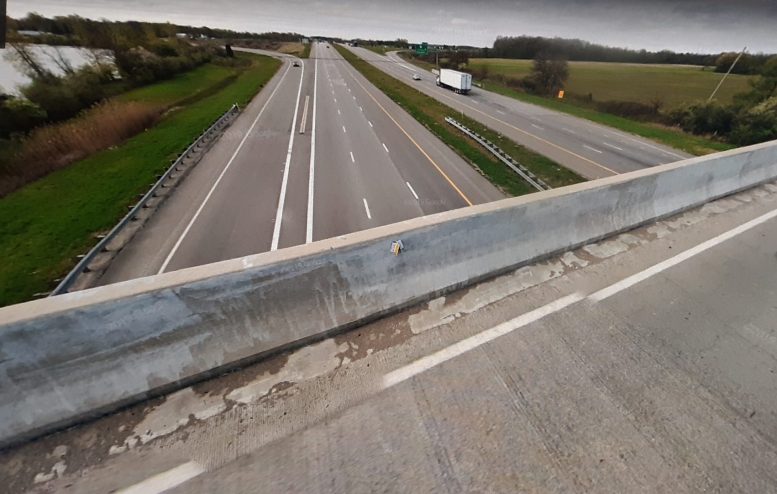BY: TYLER BUCHANAN
Ohio is on pace for another high year for traffic fatalities in 2021, though the state is seeing some improvement in the number of crashes caused by distracted driving.
State lawmakers are considering a number of traffic safety improvements meant to cut down on the number of crashes and deaths on Ohio roadways. Among them is a proposed law to crack down on distracted driving by prohibiting cell phone use while at the wheel.
Ohio averaged around 1,125 traffic fatalities in the four years leading up to the pandemic year of 2020, according to data from the State Highway Patrol. The early part of last year saw relatively few crash deaths, owing to most Ohioans working and staying at home.
But the latter half of 2020 was especially deadly, including the summer months that saw 139 deaths in July and 136 more in August.
In total, there were 1,229 crash deaths recorded in Ohio, the most seen in years.
This year is on pace to nearly match that amount.
https://datawrapper.dwcdn.net/bk5mg/1/
There have been improvements made in the number of certain types of crashes, for example those involving excessive speed and alcohol. The number of distracted driving crashes is also trending slightly downward following a number of public awareness campaigns, though there were still more than 11,000 such crashes reported in 2020.
Trending upward are the number of crashes in which the vehicle occupants were not wearing seatbelts, which can lead to more fatalities.
https://datawrapper.dwcdn.net/szCMp/1/
A safer route?
The Ohio General Assembly is considering several legislative efforts to enforce stricter traffic safety laws.
House Bill 283 from GOP State Reps. Cindy Abrams of Harrison and Brian Lampton of Beavercreek would outlaw using electronic devices while driving — even holding a cell phone while driving could lead to a ticket.
Under the bill, Ohio drivers would be restricted to using only hands-free technology with exceptions given for those calling emergency services and “single swipe” actions such as answering a phone call.
House Democrats are promoting a similar bill from Rep. Mary Lightbody, D-Westerville, which too would prohibit cell phone use while driving.
Gov. Mike DeWine has urged lawmakers throughout his first term to pass stricter distracted driving laws.
The Ohio House of Representatives saw bipartisan support for another bill to improve safety standards for animal-drawn buggies. House Bill 30, which needs approval from the Ohio Senate to head to the governor’s desk, would require buggies be equipped with flashing lights and other display elements to improve visibility.
The bill’s sponsors, Reps. Scott Wiggam, R-Wooster, and Darrel Kick, R-Loudonville, represent areas of Amish Country in which devastating crashes can occur involving vehicles and buggies.
It is possible more traffic safety legislation is forthcoming. There was bipartisan House support last term for a bill to install rumble strips on two-lane highways, but the bill died in the state senate.
***
Also from Ohio Capital Journal:
As Congress tries to regulate ‘forever chemicals,’ local water systems push back
WASHINGTON — Local water utilities worried about getting hit with lawsuits and high cleanup costs are stepping up their lobbying of Congress as lawmakers move to regulate toxic chemicals found in drinking water.
The bill, the PFAS Action Act of 2021, has garnered bipartisan support and two Michigan lawmakers, Reps. Debbie Dingell, a Democrat, and Fred Upton, a Republican, are expected to bring the measure to the House floor for passage later this week.
The legislation would direct EPA to regulate two of the most studied types of per- and polyfluoroalkyl substances, or PFAS, in drinking water. It would also designate those two chemicals as hazardous substances, which would kick-start federal cleanup standards.
But water utilities representing local governments are also amping up their lobbying on the regulation of the “forever chemicals,” which are linked to multiple health problems such as high cholesterol, thyroid disease, and testicular and kidney cancer.
“The water utilities are not responsible for PFAS in drinking water,” said Mike Keegan, a regulatory analyst at the National Rural Water Association, which is a trade group that represents local water utilities in rural areas across all 50 states.
Keegan said that the legislation, H.R. 2467, would make water utilities in rural areas financially liable if a maximum contaminant level for the chemicals is put in place by EPA. U.S. Rep. Bob Latta, R-OH5, voted against the legislation. READ MORE





